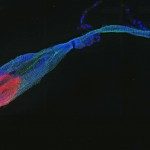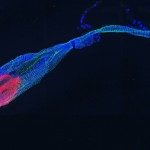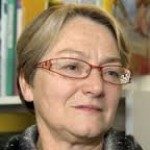Link to Pubmed [PMID] – 7559516
J. Biol. Chem. 1995 Oct;270(40):23520-32
Escherichia coli microcin C7 (MccC7) is an antibiotic that inhibits protein synthesis in vivo. It is a heptapeptide containing unknown modifications at the N and C termini (García-Bustos, J. F., Pezzi, N., and Méndez, E. (1985) Antimicrob. Agents Chemoth. 27, 791-797). The chemical structure of MccC7 has been characterized by use of 1H homonuclear and heteronuclear (13C, 15N, 31P) nuclear magnetic resonance spectroscopy as well as mass spectrometry (1177 +/- 1 Da). The heptapeptide Met-Arg-Thr-Gly-Asn-Ala-Asp is substituted at the N terminus by a N-formyl group. The C-terminal substituent consists of the phosphodiester of 5′-adenylic acid and n-aminopropanol (AMPap), which is linked via the phosphorus atom to an amide group, thus forming a phosphoramide. The main chain carbonyl of the C-terminal aspartic acid residue is connected via this amide bond to the modified nucleotide unit. MccC7 and the peptide unit inhibit protein translation in vitro while a synthetic analog of the AMPap substituent is not active. Neither the peptide nor the AMPap molecule has an effect on the growth of MccC7-sensible cells. Our results strongly suggest that the peptide is responsible for MccC7 antibiotic activity while the C-terminal substituent is needed for MccC7 transport. Implications of the structure determined in this work for MccC7 synthesis and mode of action are discussed.





